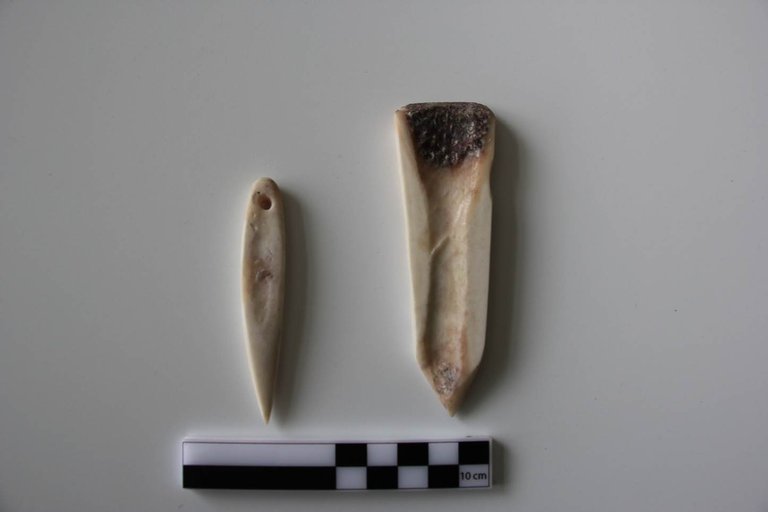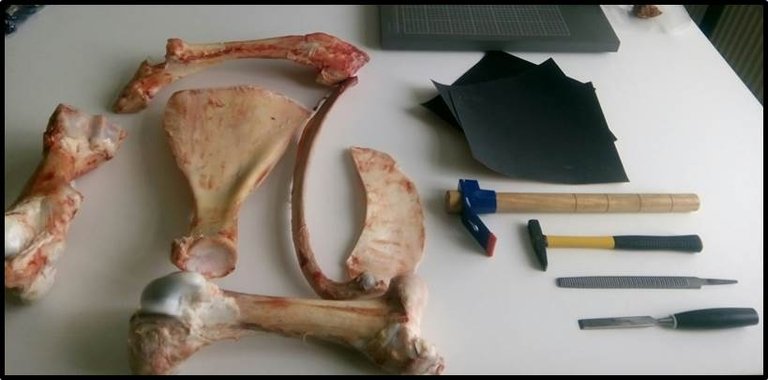Tool making is one of the earliest behaviors in history and initiator of human transformations for surviving. They were used for hunting, stitching, leatherworking, pottery making, polishing, as functional and reflecting cultural identities as parts of symbolic and ritualistic behaviors.

The earliest samples of bone using for tool making, found at Swartkans at South Africa made by Hominids and dated circa 3.000.000 - 1.000.000 mil. years ago. At later periods, there were intentionally choosing of bones for specific aims and consciously strokes for crafts at Early Paleolithic centers again.
From the beginning of Upper Paleolithic period towards Neolithic, bone toolmaking got extensive and standardized. Common tool forms are determining by the archaeologist at different geographies at present.
Just as stone tools and lithics, production techniques and raw material selection are most important for standardized forms and some bones (skeletal parts) have advantages for tool making and using duration. People learned the best ways of production and transferred their experiences to later generations by showing, telling and making
throughout a long period.
At present, we can define this method and experiment them for increasing our capacity of understanding the past. Which animals and which animal parts are more available and strong for tool making and using purposes and what kind of necessities for transforming bones to tools? All of the contents of bone tool production is depending on the person who wants to use it. At the other hand the there are some main principles while bone tool producing and they are playing an important role in this process.

As the first, you should choose the true bones by your aims as raw material and as the second step, you should have another tool for making tool. Breaking, splitting, abrasion, correction, and polishing are the unavoidable steps of tool making and they need different implements for achieving to intent. The strength and thickness of bones are affecting production steps and you have to decide all of them as the first.
I tried to make a bone needle and an awl for understanding this process and it was very informative for me to think about the prehistoric production which used bone. It was very helpful to decide all of the productive processes and think about all aspects of being a craftsman.
Theories about of prehistoric human behaviors, time and source using, relations with the environment, chains of productions, inequality related production and skills and symbolic and cognitive expressions need to getting more closer to past time human by reading, thinking, investigating and experimenting together...
Good
thanks @serhatyldz !